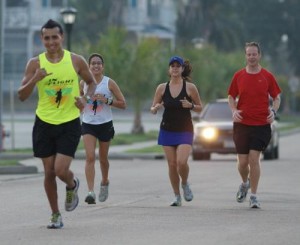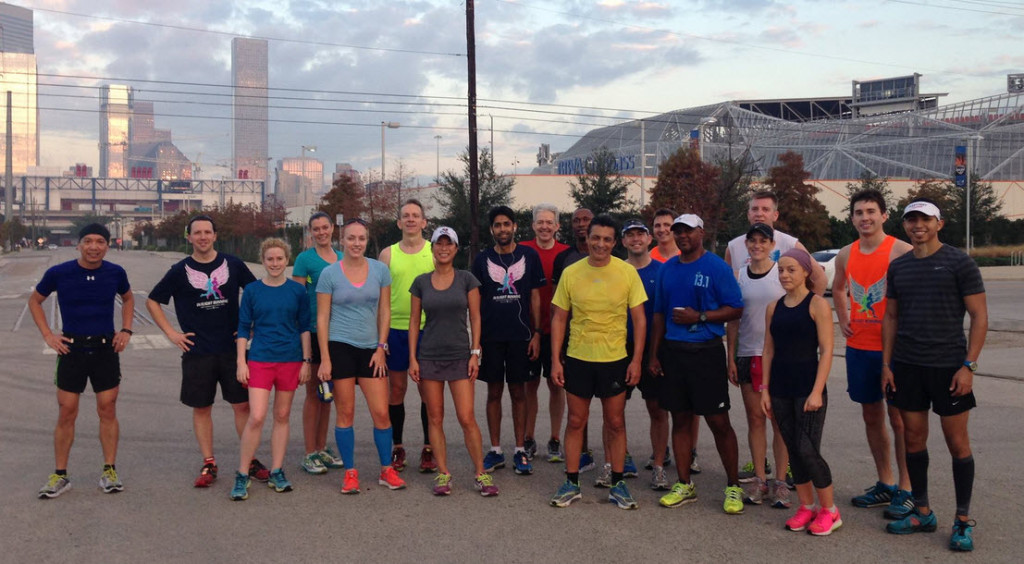 Today’s subject is on pacing and both our obsessive love and occasional hate of it.
Today’s subject is on pacing and both our obsessive love and occasional hate of it.
Getting to Boston one day for all of us, God willing, is of course all about pacing because you pretty much have to be a badass runner relative to your age to get there.
But I see many runners of every pace put waaay too much emphasis on their continued almost weekly obsession to get faster. I already covered the #1 reason runners get injured which is too many miles (see tip #1 post below) but the other huge reason runners get injured and defeat themselves is putting waaay too much emphasis on pacing every week.
GPS watches like the Garmin are great tools but they are fueling this even more since we all know down to the second what our pace is. Pace is the end result of your effort not the beginning meaning if your legs, muscular system, heart and lungs do not have a base or are trained up properly pushing pace will get you hurt or not allow you to burn fat stores and drop the garbage weight that makes many of us slower.
Over pacing during training when your body is not ready for it would be like taking a mis-aligned Ford Pinto (I am showing my age here) that is not tuned up that well and rolling it down the autobahn. Guess what will happen? The engine will probably blow a gasket, fuel economy will suck and the wheels will probably fall off. Not to overuse the car analogy here but your body is your car and how you drive it truly counts if you want to keep the car on the road or trade up to a Jag one day.
So during this spring off season run loose and just get good quality lower miles in making sure you are rebuilding base, your pacing is appropriate and you have some variance between your mid week running pace and your longer weekend run. Your longer weekend run should be very easy and conversational. I know, it’s tough to do but the runners of any pace level who get that are the ones who I see excelling with their running.
I will give you upcoming tips over the next few weeks on other things to add to the mix during the spring including monitoring heart rate and foot speed or cadence, two things I will be preaching to my runners even more this next training season to minimize injury and become faster.
It’s a tough job keeping runners in check with pacing but someone’s gotta do it so I will continue to preach research running not just gut running. Remember all the running you do that is not on a race course is training and if your pacing during training is too close to racing speed then you are probably headed for an injury and we all get cranky when that happens.
Don’t worry we will handle ways to get faster (once again based on research not the latest get fast in 5 steps Runners World article) but during the spring just get the quality miles in, gently rebuild base if you have lost your edge and sneak in some strength training to build strength and toughness for the marathon training season that lies ahead.
Tough love man but I am a realist knowing that we are all wired around “how fast am I” or “how fast should I be”. Take the pressure off in the Spring, get out the door more consistently and don’t worry so much about pacing or mileage. In fact try running without a watch, Garmin or an Ipod and get a better handle of how your foot strike sounds when you run. Leave the gadgets home at least once a week. Tough to do but it is truly liberating!
 Spring break has come and gone and for those who plan on running a marathon or half marathon this fall or winter, it is not too early to get things into motion. In Flight Running starts our official group training program on May 27th for both fall and winter marathoners.
Spring break has come and gone and for those who plan on running a marathon or half marathon this fall or winter, it is not too early to get things into motion. In Flight Running starts our official group training program on May 27th for both fall and winter marathoners.


